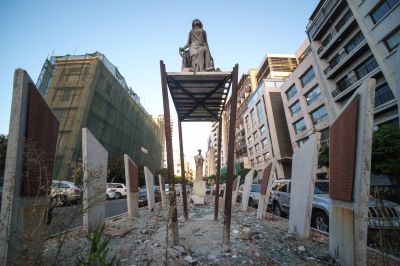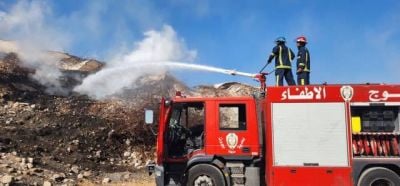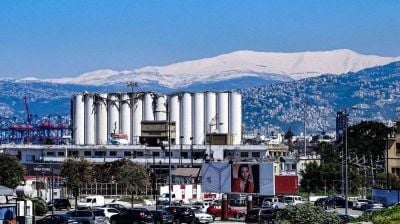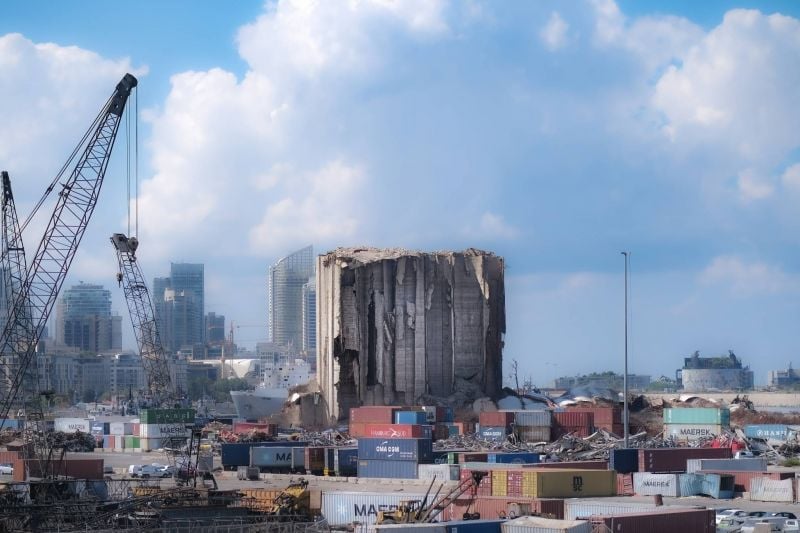
A view of the Beirut port silos in Oct. 2022. (Credit: Joao Sousa/L'Orient Today)
BEIRUT – The future of Beirut port’s grain silos, which burned under largely unabated fires for several weeks this summer, remains in question.
The silos were partially destroyed in the Aug. 4, 2020 explosion, and many survivors wish for them to be preserved as a monument to honor the victims. The silos are also credited with shielding Beirut from the full wrath of the blast.
However, over the summer, rotting grains still piled inside the partially-collapsed northern block of silos caught fire. Many people blamed the government for not taking action to contain the blaze, which eroded the base structure of the silos’ northern block until it collapsed. In a twist of fate, part of the silos fell during a march on Aug. 4, 2022— exactly two years after the port blast.
What will happen to the silos that remain standing? The answer isn’t so simple.
In February, the Beirut Urban Declaration — a group advocating for the preservation of the silos— launched a petition urging the government not to proceed with a plan to demolish the Beirut port silos, arguing that the damaged structure “be considered a vital space and a public right of the city.” The Order of Engineers and Architects (OEA) later presented the cabinet with a plan to protect the silos and ways to reinforce them.
However, on March 16, Prime Minister Najib Mikati’s cabinet approved the silos’ demolition. This decision was challenged two days later by activists, leading Culture Minister Mohamad Mortada to issue a decision granting heritage status to the silos.
But this didn’t guarantee their preservation. On April 14, the cabinet entrusted the Council for Development and Reconstruction with demolishing the silos.
Then, in early July, the first fires broke out and continued burning through August.
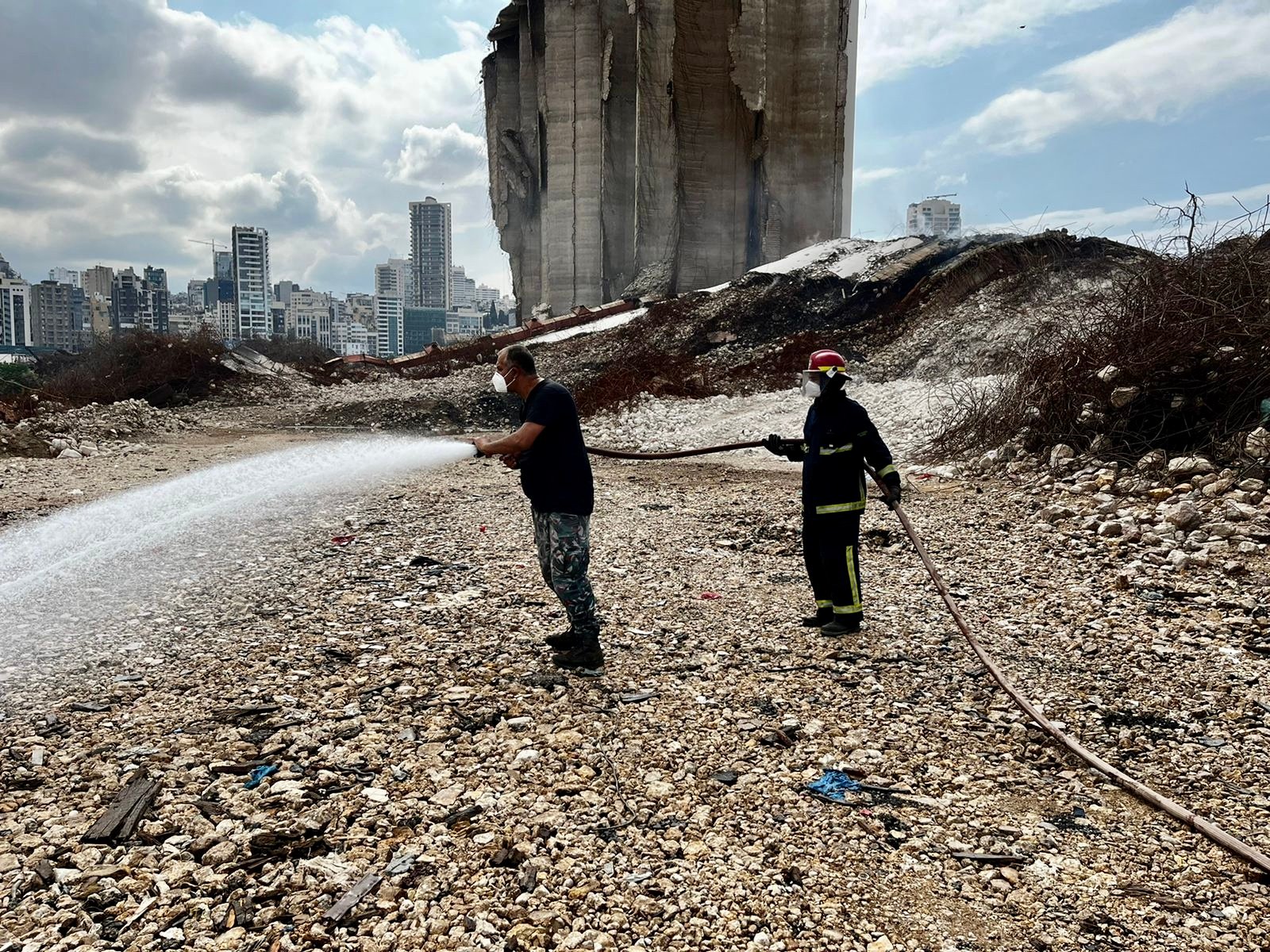 Members of the Beirut Fire Brigade work on cooling effort at the port. (Courtesy of Mohamad Abiad)
Members of the Beirut Fire Brigade work on cooling effort at the port. (Courtesy of Mohamad Abiad)
Where do the memorial efforts stand? Not too much further along than they did this summer, according to officials in charge of the process. Efforts seem to be still focused primarily on cleanup. Residents of the nearby Mar Mikhael and Gemmayzeh neighborhoods complain of the foul odor of the festered, burning grains.
Workers initially planned to spend two weeks cooling the burning silos with water, according to Mohamad Abiad, a senior advisor at the Environment Ministry. The process, launched in August, has now dragged into October.
Abiad blames the delay on the summer’s high temperatures: “the piles that we were cooling had heated up again.”
The Environment Ministry is charged with supervising the work to ensure public safety, as well as the safety of workers and the environment. It is also responsible for monitoring, exposure and coordination between the Port Authority, the Economy Ministry and the Public Works Ministry.
Since re-starting work earlier this month, the rubble of the northern block of silos was sprayed with a fungicide. The southern silos, which still stand, will not be cleared until the consultant in charge of safety and structural stability gives the all-clear that it’s safe to move in and work.
Abiad told L’Orient Today that the grain in the southern silos is fermenting and could cause damage if it catches fire. One saving grace is that the composition of the grains in the relatively-intact southern silos is different from that of the northern block, which contains corn that ferments much more quickly.
He added that initial work to remove the rubble had to be stopped because the airborne fungicide was dangerous for the workers present — even more so than the smoke rising from the silos.
“Of course, they are going to see smoke,” explained Abiad. “When you try to cool them now, it is too hot so the water is going to evaporate and the smoke is going to rise. The smoke is not dangerous. What is dangerous is the fungus, which is airborne.”
Stalled preservation efforts
Speaking to L’Orient Today, Jad Tabet, the former head of the OEA and founder of the Beirut Urban Deceleration, blamed caretaker Transport and Public Works Minister Ali Hamieh for stalling any potential work on the silos.
In late August, Mikati wrote a letter to Hamieh asking him “to preserve the southern block of the Beirut port silos and safeguard it as a memorial commemorating the memory of the port martyrs.” The message, seen by L’Orient Today, said that the March demolition order announced would be reversed after reviewing the ministerial committee’s report, which cites a technical study assuring the stability of the southern silos.
Despite this study, which found that the southern block is stable, Hamieh requested a second study.
“The minister says he asked for a second study but we’ve seen nothing of it yet,” Tabet said, but a future fire could affect the stability of the structure. Tabet said he believes Hamieh is stalling: “The minister does not want the silos to stay and he's said [so] many times.”
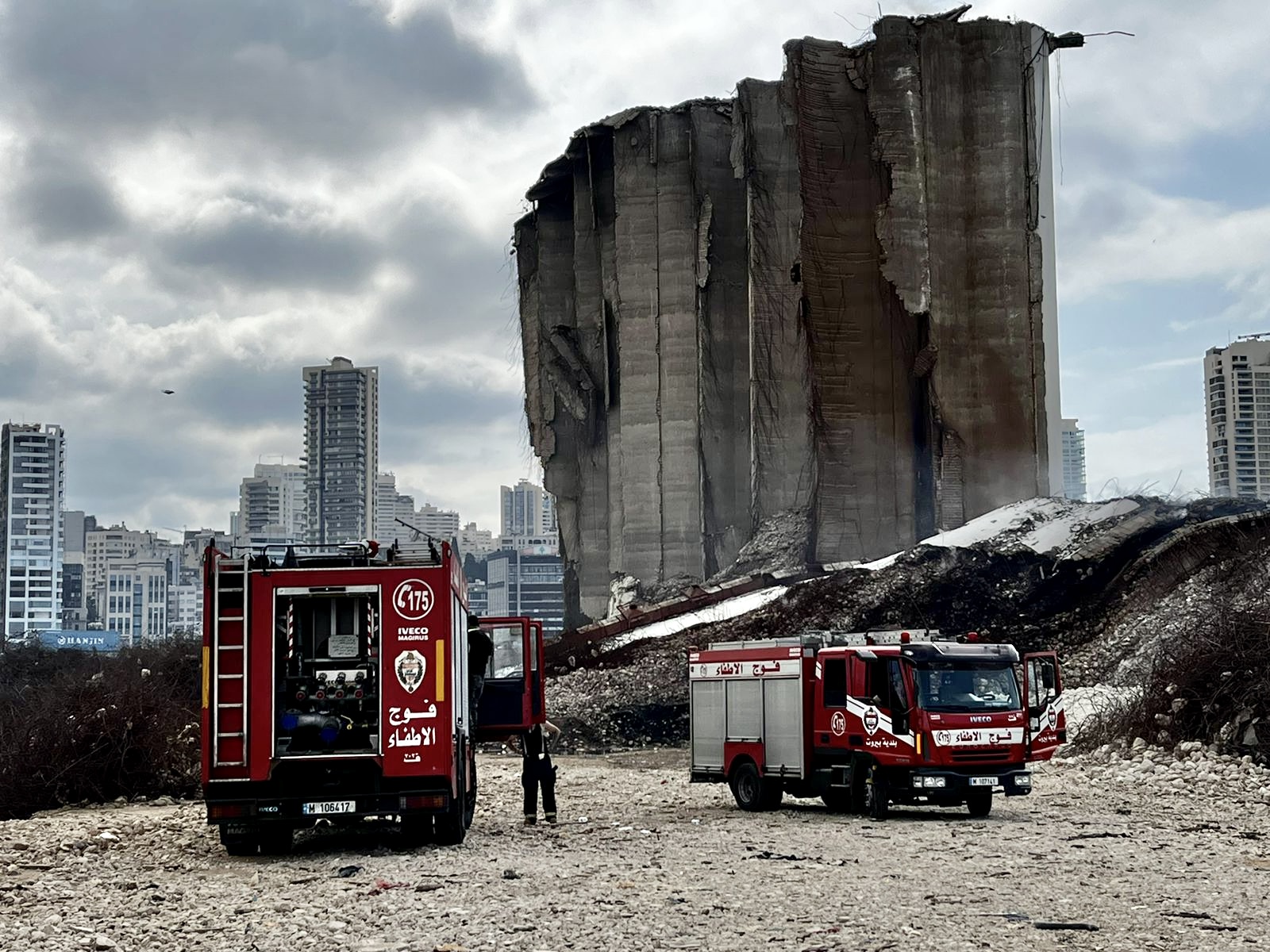 Trucks with the Beirut Fire Brigade parked in the shadow of the partially-collapsed port silos. (Courtesy of Mohamad Abiad)
Trucks with the Beirut Fire Brigade parked in the shadow of the partially-collapsed port silos. (Courtesy of Mohamad Abiad)
Despite repeated attempts, Hamieh could not be reached for comment by L’Orient Today. He is close to Hezbollah and was one of the four ministers to boycott cabinet sessions in late 2021 in protest of Judge Tarek Bitar’s investigation of the port blast.
Last Friday, a delegation from the OEA — led by the group’s head Aref Yassine —met with Hamieh to inquire about the fate of the port. Hamieh reportedly told visitors that there are plans to build new silos, as officials await the results of the second technical study. Both studies were outsourced to architecture firm Khatib & Alami, which could not immediately be reached for comment.
Tabet believes the issue is a matter of urgency. “If we don’t act now, it would put the fate of the silos in danger,” he said.
The Environment Ministry halted work on the silos Sunday as it awaits more funding and approval from the Public Works Ministry to cool lower levels of the silos.
Abiad added that the changing weather would not hamper work: “the wind makes no difference, and neither does rain. We added the anti-fungal treatment and it is effective for 28 days beyond the spraying.”
Once Khatib & Alami send the second study to the Ministry of Public Works that all is clear, Abiad said the Ministry will go to the cabinet to either amend the demolition decree or issue a new decree altogether.
The treated rubble will be moved to a different part of the port, as transport outside would only increase costs. The rubble may be later used to cover the country’s landfills.
